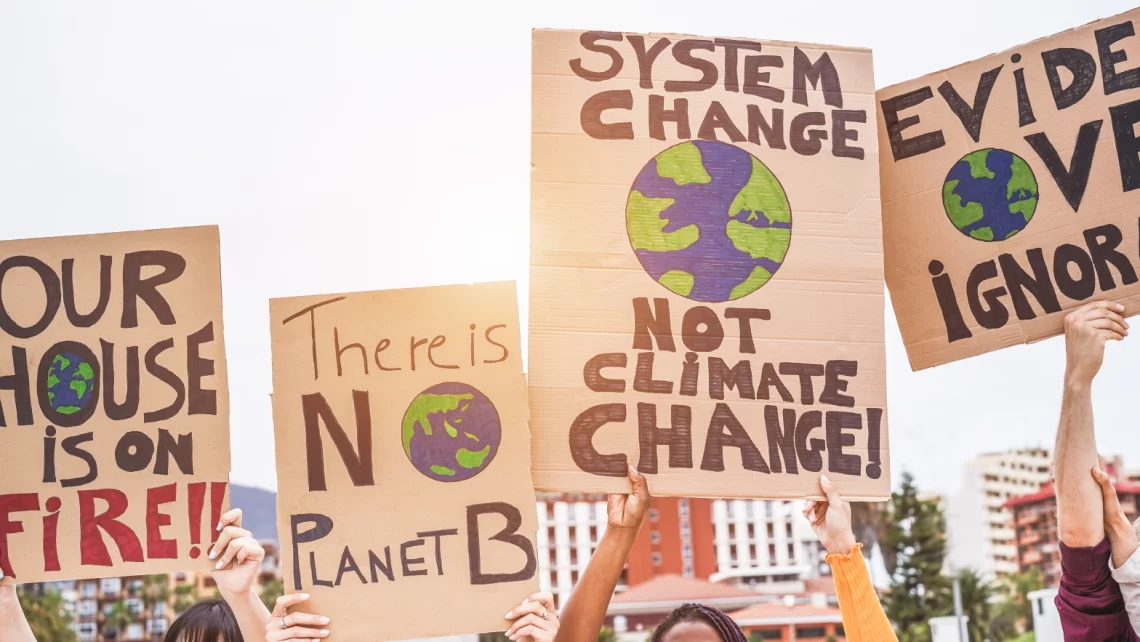|
Getting your Trinity Audio player ready...
|
What COP26 could tell us about the future of our planet
At the verge of another COP, this one in Glasgow, Scotland, one of the alarming updates released by UNFCC (1) of the NDC’s (Nationally Determined Contributions under Paris Agreement) was that with the current targets and ambitions of countries and companies our planet will reach 2,4oC in 2100. Which means a huge catastrophe for the human race. You may take a pick of what our world will look like with 3oC at this video produced by The Economist with scientists inputs:
Nevertheless, new promises were made at this COP26 to try to revert this scenario.
I felt like a drone being able to watch closely our global leaders vocalize their ambitions even from my home office.
I’ve heard Ms Mary Robinson (former Ireland president and UN high Commissioner for Human Rights) quoting Nelson Mandela: “It always seems impossible until it is done”.
The chairman of AstraZeneca Leif Johansson said that climate action should be strategic for companies.
The Chairman of Iberdrola, Ignacio Galán: “Don’t be afraid to phase out coal. We’ve been profitable from transitioning to renewables”.
And these are only a few examples from global leaders as well as the numerous activists that were able to vocalize their anger and frustration at the various stages saying how little has been done so far, and also the size of the damage already been felt by the poorest and undeveloped countries, including Brazil, India and Africa.
As a Global Reporting Initiative (GRI) training center in Brazil with a clear purpose of working towards transforming organizations through education and thus helping our learners to know how transparency could be a way of engaging stakeholders in their long term strategic plans for sustainable development, we have a fiduciary duty to keep them up to date not only with new technologies but also to all political, NGO’s and multilateral discussions globally that could affect how organizations report its impacts today or in a medium or long term.
Bridge3 Governance & Sustainability is also honored to be involved with some important clients in their reporting process. Which means not only reporting but integrating the sustainability journey into their strategy with short, medium and long term ambitions linked to their materiality.
COP26 brought also the announcement by International Accounting Standards Board (IFRS) the initiative to provide recommendations through the International Sustainability Standards Board (ISSB) which is supported by CDSB (Climate Disclosure Standards Board), TCFD (Task Force Climate Related Financial Disclosures), Value Reporting Foundation (SASB plus IIRC) and World Economic Forum (WEF).
In trying to understand why GRI was not involved yet in this initiative I’ve found the brilliant words of the renoum Professor Carol Adams.
On one hand, it is perfectly understandable that investors need more comparable and reliable data among reporters.
In the other, GRI has a broad approach of identifying the impacts of an organization into the society and the environment and the other way around, whereas the ISSB is seeking to limit the impacts where it affects its cash flow / enterprise value. As professor Adams says: “Ïs it an attempt to redefine sustainability to be about companies rather than people and planet?”(2)
The ISSB has a clear goal of meeting the needs of investors and other financial market participants. What about the other stakeholders?
It is interesting to note and Prof. Adams also points out that World Economic Forum recommendations are mainly based on GRI standards in its Measuring Stakeholder Capitalism Initiative (3).
Moreover, in the GSSB (Global Sustainability Standards Board), GRI’s multi stakeholder’s board there are members from the investment world. So, the reason that GRI is not aligned with investors is a misconception.
For now, there is only a sense of the direction the ISSB is taking. At COP26 one of the journalists present at the audience asked, during the announcement, when they are going to release the standards. The answer was: probably the second semester of 2022.
To have a forecast of what the recommendations would look like, we have the “Summary of the Technical Readiness Working Group’s Programme of Work”(4), released last November, the 3rd . Trying to summarize what they say about materiality: the information on impact on environment and society will be material if it is expected to affect enterprise value.
Again, if you think strategically and in the long term the externalities costs of the environment and society will surely affect a company’s long term value and even its own survival. We all depend on nature and human resources.
As Professor Carol Adams also points out: we have the sustainable development ambition to seek urgently by companies. Is the IFRS putting this in their priority over these discussions?
Will these be enough for companies to be held accountable for their impacts? Let’s follow closely what comes next.
References:
(1) https://unfccc.int/news/cop26-update-to-the-ndc-synthesis-report
(2) https://drcaroladams.net/a-trial-balance-for-sustainability-reporting-reconciling-the-issb-and-the-gssb/
(3) https://www3.weforum.org/docs/WEF_IBC_Measuring_Stakeholder_Capitalism_Report_2020.pdf
(4) https://www.ifrs.org/content/dam/ifrs/groups/trwg/summary-of-the-trwg-work-programme.pdf
